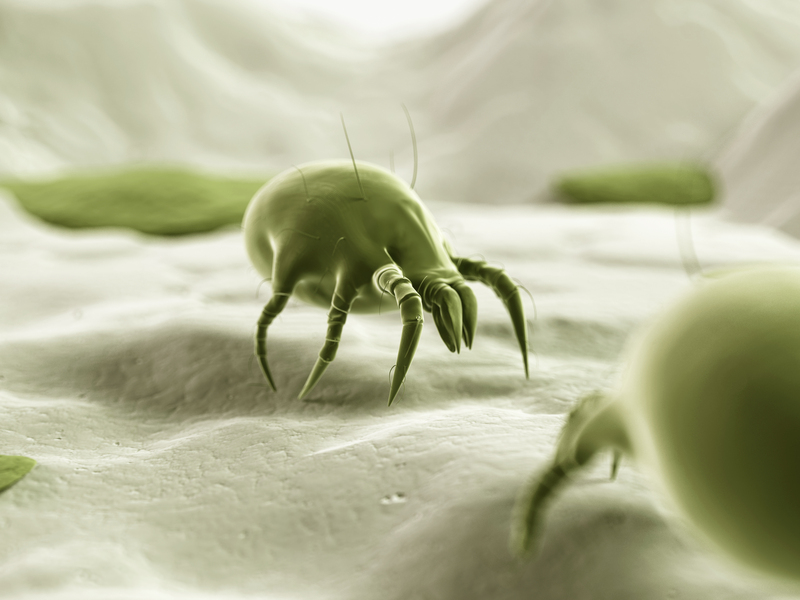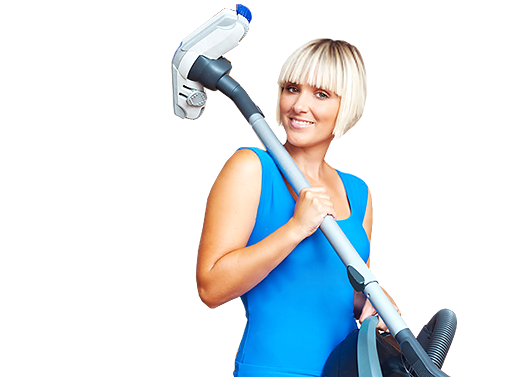Achieve a pristine, mold-free bathroom with our guidance
Posted on 11/06/2025
Achieve a Pristine, Mold-Free Bathroom with Our Guidance
Keeping your bathroom clean, fresh, and mold-free is more than just an aesthetic pursuit--it's essential for a healthy and hygienic home. Bathrooms, by their very nature, are prone to high humidity, water splashes, and the occasional leaky fixture, creating the perfect breeding ground for mold and mildew. If you're ready to achieve a spotless, mold-free bathroom, you've come to the right place. Our comprehensive guide equips you with actionable steps, preventive strategies, and expert tips tailored to your needs.

The Importance of a Mold-Free Bathroom
Mold might seem like a minor issue, but it can have a profound impact on your health and the longevity of your home. Let's explore why maintaining a mold-free bathroom environment should be a top priority:
- Health Benefits: Mold spores can trigger allergies, worsen asthma, and lead to respiratory problems.
- Home Value: Persistent mold issues can reduce the value of your property and increase future repair costs.
- Aesthetics: Mold stains are unappealing and can detract from the beauty of your bathroom.
- Odor Control: Mold and mildew emit musty smells, making your bathroom feel far less pleasant.
By following our expert advice, you'll not only achieve a pristine bathroom, but you'll also protect your investment and your family's well-being.
Understanding Mold: The Basics
Mold is a type of fungus that thrives in damp, warm environments. Bathrooms, with their frequent use of water and fluctuating temperatures, create ideal conditions for mold growth. Mold can develop on tiles, grout lines, ceilings, and even under sinks. Spotting it early and taking the right steps ensures you're never caught off-guard.
Most Common Types of Bathroom Mold
- Aspergillus: Often yellow or green, frequently found on walls and ceilings.
- Pneumoniae: Can appear as dark spots, contributing to musty odor.
- Stachybotrys chartarum: Known as "black mold," notorious for health risks.
Early detection is key to keeping your bathroom mold-free. Look for discoloration, peeling paint, and those unmistakable musty odors.
Root Causes of Bathroom Mold
Understanding what causes mold in your bathroom is the first step in prevention. Here are some common culprits:
- Poor Ventilation: Insufficient air circulation traps humidity and fosters mold growth.
- Leaky Fixtures: Dripping faucets, pipes, or showerheads create persistent damp spots.
- Standing Water: Puddles on the floor or in the shower provide a perfect breeding ground for mold and mildew.
- Absorbent Materials: Items like rugs, curtains, and porous tiles can hold moisture longer than you realize.
Identifying and addressing these issues is crucial for long-term bathroom cleanliness and mold prevention.
Step-by-Step Guide to a Mold-Free, Pristine Bathroom
Let's break down the process of maintaining an immaculate, mold-free bathroom into easy, actionable steps:
1. Improve Ventilation
- Install or Upgrade Exhaust Fans: Use bathroom exhaust fans during and after showers to remove excess humidity.
- Open Windows: Allow fresh air to circulate and reduce moisture build-up.
- Leave Doors Open: When possible, prop the bathroom door open to allow for airflow.
2. Control Moisture Sources
- Repair Leaks Immediately: Fix any leaky faucets, pipes, or showerheads as soon as you notice them.
- Use a Squeegee: After each shower, squeegee the walls and glass doors to remove excess water.
- Dry Surfaces: Wipe down counters, sinks, and high-use areas to prevent moisture accumulation.
3. Select Mold-Resistant Materials
- Mold-Resistant Paint: Use paints and primers labeled as mold-resistant to reduce the risk of spores taking hold.
- Waterproof Grout & Sealant: Ensure that tiles are sealed with high-quality waterproof grout.
- Replace Carpet & Fabric: Use non-porous, water-resistant materials for mats and shower curtains.
4. Clean and Disinfect Regularly
- Weekly Cleaning: Scrub tiles, grout, and all corners using a bathroom-specific cleaner.
- DIY Mold-Removal Solutions: A mix of vinegar and baking soda or diluted bleach can safely clean most surfaces.
- Change Towels Regularly: Always hang towels to dry and wash them frequently.
5. Keep Humidity in Check
- Dehumidifiers: If your bathroom lacks proper ventilation, consider a small dehumidifier.
- Monitor Humidity Levels: Ideally, keep humidity below 50% to minimize mold risk.
Best Practices for Ongoing Bathroom Mold Prevention
Prevention is always better than cure. Here are our expert-recommended practices for a mold-free and pristine bathroom:
- Check and Seal Grout: Every six months, inspect grout for cracks or wear and re-seal as necessary.
- Declutter: Minimize the number of personal items stored in the bathroom, as they can trap moisture and make cleaning trickier.
- Launder Linens Promptly: Don't let wet towels or bath mats linger on the floor; wash and dry them right away.
- Inspect Hidden Areas: Regularly check under sinks, behind the toilet, and inside cabinets for early signs of mold.
Advanced Mold-Removal Strategies
If you've already discovered mold in your bathroom, don't panic. Here are advanced steps to remove bathroom mold thoroughly:
- Identify the Source: Find where the moisture is coming from--whether it's a hidden leak or condensation issue--and resolve it first.
- Protect Yourself: Wear gloves, a mask, and goggles to avoid contact with mold spores.
- Surface Cleaning: Use a commercial mold remover or a mixture of one cup bleach in one gallon of water. Scrub hard surfaces thoroughly.
- Replace Porous Materials: If mold has penetrated drywall, insulation, or ceiling tiles, they will likely need to be removed and replaced.
- Consider Professional Help: For extensive mold infestations, contact mold remediation experts to ensure safe and effective removal.
Choosing the Right Cleaning Products
For bathroom mold prevention, not all products are created equal. Here's what to look for:
- Mold-Specific Cleaners: Select a cleaner designed to kill mold and mildew effectively.
- Non-Toxic Alternatives: Vinegar, hydrogen peroxide, or baking soda are safe, eco-friendly options for regular cleaning.
- Avoid Ammonia with Bleach: Never mix ammonia and bleach, as this produces toxic fumes.
DIY Cleaning Recipe
- Vinegar Solution: Combine equal parts white vinegar and water in a spray bottle. Apply to moldy surfaces, let sit for one hour, then wipe clean.
- Baking Soda Paste: Mix baking soda with enough water to form a paste. Apply, scrub, and rinse thoroughly.
Spotlight: Mold-Proof Bathroom Design Tips
If you're renovating or building a bathroom, it's the perfect opportunity to implement mold-resistant bathroom design features:
- Large Tiles: Fewer grout lines mean fewer places for mold to hide.
- Wall-Mounted Fixtures: Sinks and toilets mounted to the wall are easier to clean underneath.
- Curbless Showers: Improve drainage and make cleaning a breeze.
- Glass Shower Doors: Easier to keep dry compared to shower curtains.
- Anti-Microbial Surfaces: Choose countertops, hardware, and flooring designed to resist bacteria and mold growth.

Addressing Frequently Asked Questions
-
Q: How often should I deep-clean my bathroom to prevent mold?
A: Weekly cleaning is recommended, with extra focus on grout and corners at least once a month. -
Q: Can houseplants help reduce bathroom mold?
A: Certain plants, such as Boston fern or peace lilies, can help absorb excess moisture but should not substitute regular cleaning and ventilation. -
Q: What's the best way to clean mold from tile grout?
A: Use a stiff brush and a paste made from baking soda and water, then spray with vinegar. Let it bubble, scrub, and rinse. -
Q: Is it safe to use bleach in the bathroom?
A: Yes, but always ensure adequate ventilation and never mix with ammonia-containing products.
Final Thoughts: A Pristine, Mold-Free Bathroom Is Within Your Reach
Maintaining a mold-free, spotless bathroom doesn't have to be a constant battle. By understanding the causes, implementing smart design choices, and sticking to a consistent cleaning and moisture-control routine, you can enjoy a sparkling, hygienic oasis every day. Remember, the benefits are far-reaching: improved health, increased property value, and a beautiful home environment.
- Improve ventilation to keep humidity at bay.
- Clean regularly with mold-fighting solutions.
- Address leaks and excess moisture promptly.
- Opt for mold-resistant materials wherever possible.
Take these simple but effective actions and you'll soon achieve a pristine, mold-free bathroom that serves both form and function. For more in-depth bathroom care tips, bookmark this guide and return any time your bathroom needs a little extra TLC.




